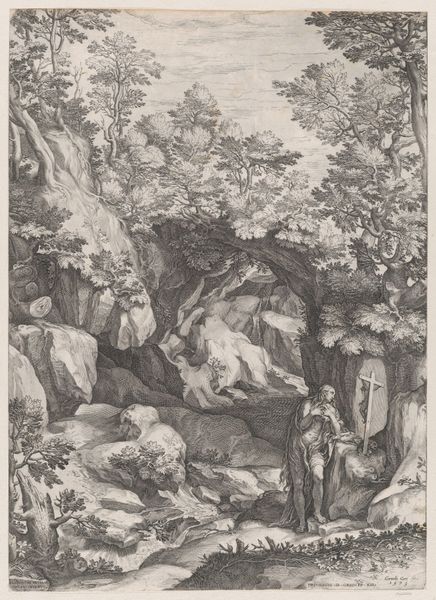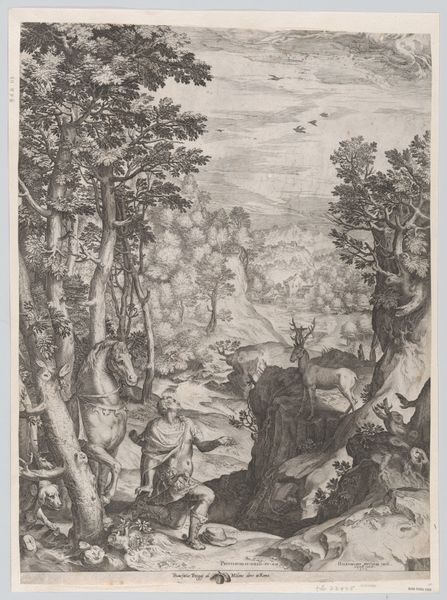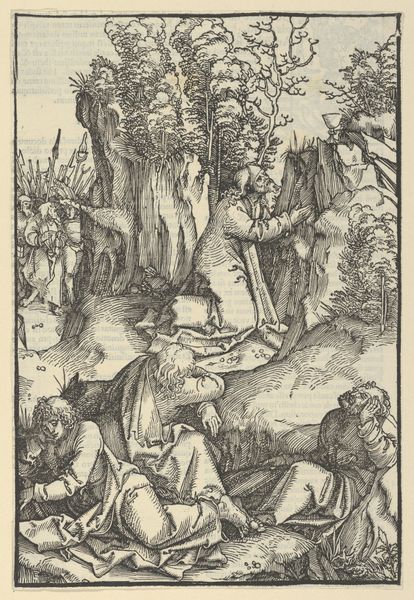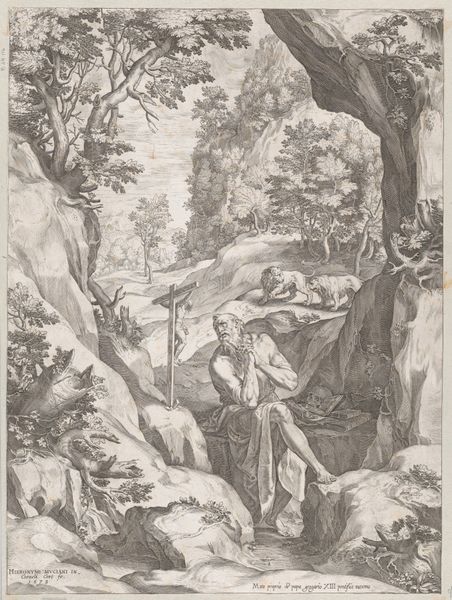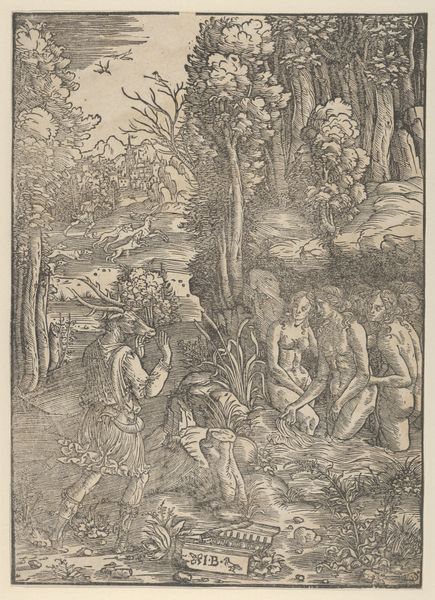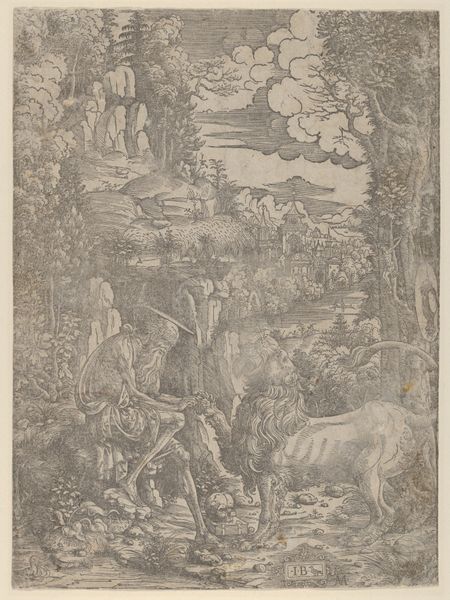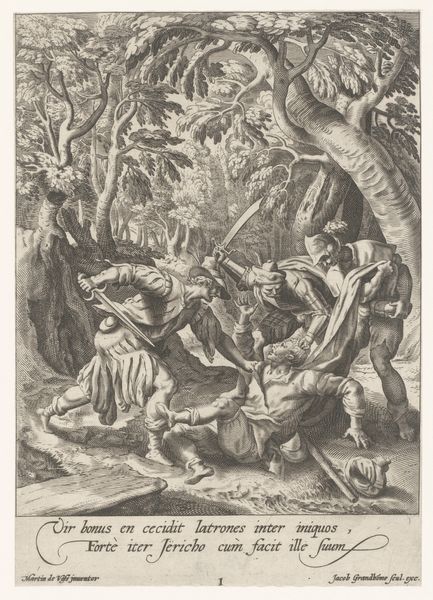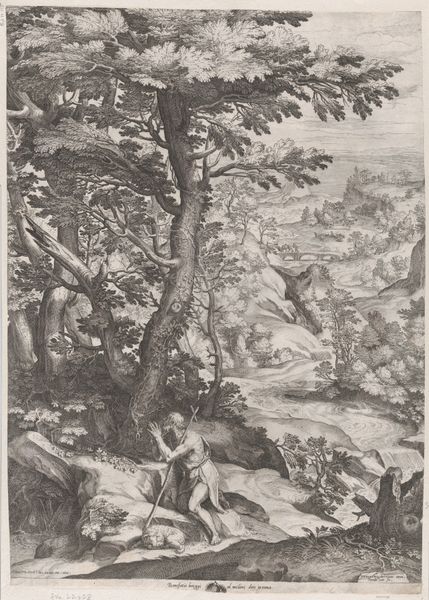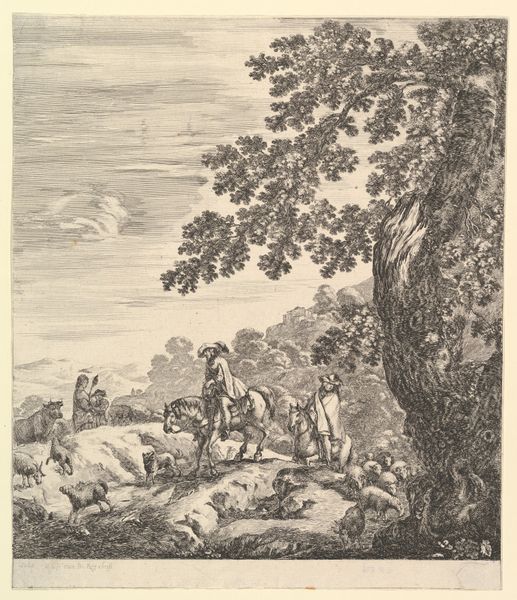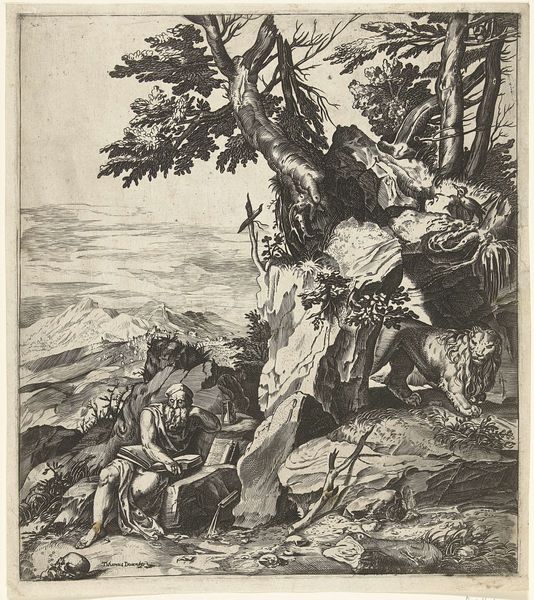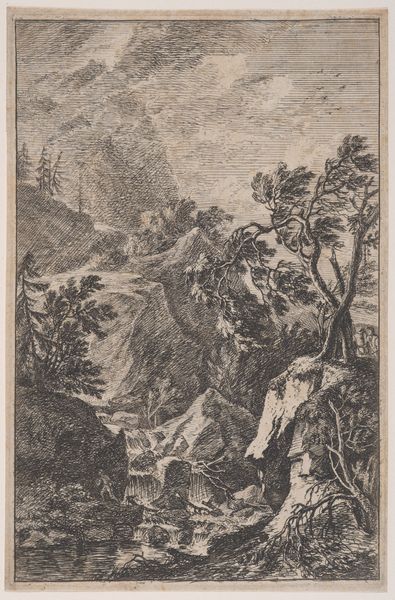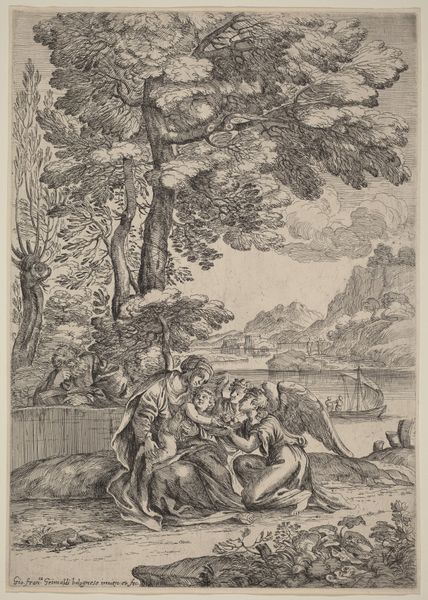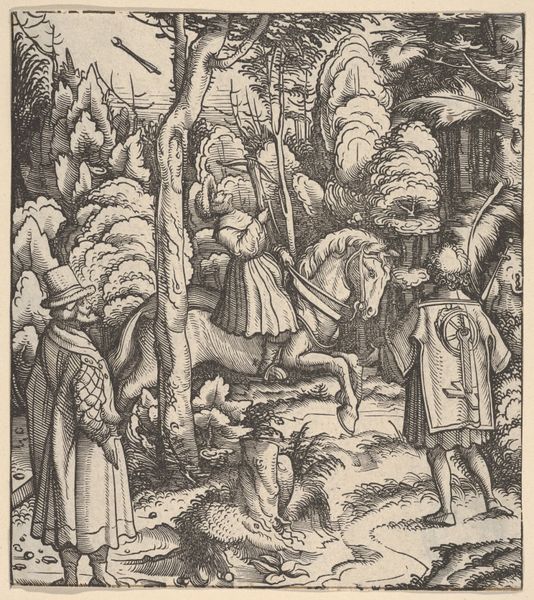
drawing, print
#
drawing
# print
#
landscape
#
mannerism
#
history-painting
Copyright: Public Domain
Curator: Look at this dramatic landscape—"St. Onuphrius in the Wilderness," created in 1574, a print by Cornelis Cort, currently housed here at the Met. What's your initial impression? Editor: Bleak! Utterly bleak. And big, somehow, despite being a print. Like looking into someone’s internal drama played out on a grand scale. The old man seems swallowed by the scene. Curator: Indeed. Cort masterfully uses the landscape to evoke that very feeling. Consider the composition—Onuphrius is dwarfed, almost hidden. He is positioned within this winding ravine, which directs our eye deeper into the forest. The sharp diagonal of the water flow, contrasted by the vertical trees, suggests instability. Editor: It's like the very earth is pushing back against him! Is it me, or does the rendering also feel kinda…stylized? Curator: It does! This piece exemplifies the Mannerist style; notice how the landscape is idealized, almost theatrical. There's a certain artificiality—those twisted branches, the carefully arranged rocks—it is more staged than strictly observed from life. Editor: So, more about creating a mood than capturing reality, then. He’s gone for this desolate, melancholic vibe for sure. Curator: Precisely. Onuphrius was a hermit, renouncing society for a life of solitude and contemplation. The landscape serves to illustrate that journey, both physical and spiritual. The wildness reflects inner turmoil but also potential redemption. That sword that is almost centered gives it a bit of hope, even with the dark lines. Editor: Right. That makes me wonder: how sustainable, in reality, can such withdrawal actually be? Perhaps that bleakness speaks more to the futility of radical isolation, which is quite the story to tell. But more generally speaking, that black-and-white world speaks about more that initially meets the eye, and this particular work makes the viewer confront and reflect, even doubt! Curator: A profound question. And perhaps Cort, through this stark and dramatic visual, invites us to confront exactly those tensions inherent in the search for meaning outside of societal norms. Editor: It's all these contrasts, visually and thematically that brings a painting from a past time and transforms it in an important piece of art.
Comments
No comments
Be the first to comment and join the conversation on the ultimate creative platform.

